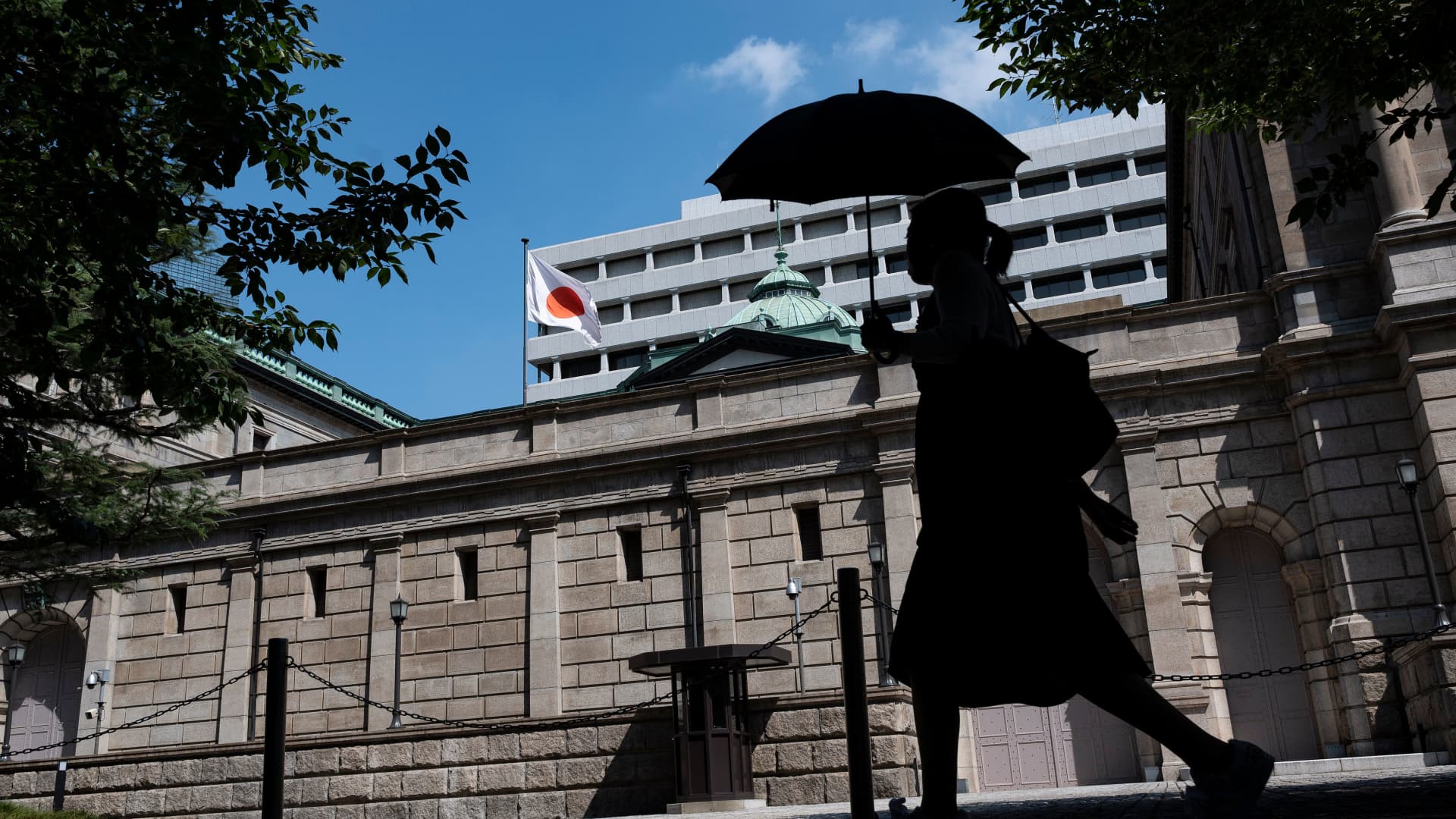Shoppers pass along the high street in Maidstone, UK, on Wednesday, April 16, 2025.
Bloomberg | Bloomberg | Getty Images
The International Monetary Fund downgraded the U.K.'s 2025 growth forecast in its latest economic outlook released on Tuesday, warning that U.S. President Donald Trump's trade tariffs, higher borrowing costs and increased energy prices will dent output this year.
In its reference forecast, the IMF predicted the British economy will grow 1.1%, down by 0.5 percentage points from its previous forecast issued in January. The fund now also expects the U.K. to grow by 1.4% in 2026, 0.1 percentage points lower than its previous estimate.
The figures were part of the IMF's reference outlook, which does not include the tariff announcements made after April 4, such as the 90-day pause on the higher duties that Trump initially announced.
The downgrade for 2025 "reflects a smaller carryover from 2024, the impact of recent tariff announcements, an increase in gilt yields, and weaker private consumption amid higher inflation as a result of regulated prices and energy costs," the IMF wrote in its World Economic Outlook report.
The downgrade pours more cold water on the U.K.'s Labour government which has made a main priority of growing the economy and is already contending with the uncertainty posed by trade tariffs from one of its largest trading partners, the U.S.
Trump announced a baseline 10% tariff on U.K. imports to the U.S. on April 2, despite Britain and the U.S. having almost balanced trade when it comes to the exchange of goods.
While the U.K. is hopeful it can strike a trade deal with the U.S., the White House leader's mercurial stance on trade and tariffs has put financial institutions on edge.
The latest IMF downgrade for Britain echoes a similar downturn in domestic forecasts. In February, the Bank of England halved the U.K.'s growth projection for 2025 from 1.5% to 0.75%, warning of an uncertain global economic outlook and a sharp uptick in inflation later this year on the back of higher energy and water bills.
The U.K.'s Office for Budget Responsibility in March also halved its growth forecast for the U.K., slashing its outlook from 2% to 1% growth in 2025.
Despite the recent downgrades, the U.K. economy has shown some signs of life recently. The latest monthly growth data released earlier in April showed the economy grew by a larger-than-expected 0.5% month-on-month in February, from zero growth in January. National inflation, meanwhile, cooled to a lower-than-expected 2.6% in March.
The Bank of England appears sanguine on interest rate cuts as it looks to balance boosting growth with its predicted uptick in the inflation rate. Economists widely expect the BOE to cut its key interest rate from 4.5% to 4.25% at its next monetary policy meeting in May.
Bright spots in the euro zone
Looking at the U.K.'s continental neighbors in the euro zone, the IMF predicted a slight decline in 2025 output, forecasting that growth in the euro area's GDP will hit 0.8% in 2025, before picking up modestly to 1.2% in 2026.
"Rising uncertainty and tariffs are key drivers of the subdued growth in 2025," the fund said. It noted that offsetting forces that support the modest uptick in 2026 include stronger consumption on the back of rising real wages, along with a projected fiscal easing in Germany following major changes to its fiscal rule, known as the "debt brake."
Spain, holiday homes, tax
Westend61 | Westend61 | Getty Images
The IMF singled out Spain as a bright spot in the euro zone, stating its growth momentum "contrasts with the sluggish dynamics elsewhere," with the Mediterranean nation expected to expand its economy by 2.5% this year following an upward revision of 0.2 percentage points from the forecast made in January.
"This reflects a large carryover from better-than-expected outturns in 2024 and reconstruction activity following floods," the IMF said.
Trump's tariffs cast a shadow over the wider EU, however. The U.S. president initially imposed a 20% "reciprocal" tariff on all goods coming from the European Union but paused the measures for 90 days until early July, lowering the duty to 10% until that time.
As it looks to sign its own trade deal with the States in the interim, the EU paused its retaliatory duty targeting 21 billion euros ($24.1 billion) worth of U.S. goods "to allow time and space for EU-U.S. negotiations," the European Commission said.

 1 month ago
98
1 month ago
98




























 English (US)
English (US)